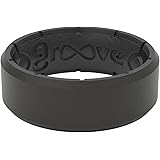A necklace of prayer beads—also known as malas, rosaries, or subha malas—is used by followers of various religions to help them count repetitions of prayers, chants, and mantras. These beaded necklaces are typically comprised of 108 beads, and they can be worn around the neck or on the wrist.
Prayer beads can be made out of many different materials, and the tassel or pendant at the end often has a specific meaning for the wearer. When choosing a mala to use in meditation, it’s important to choose one that feels good in your hands and makes you feel connected with the spirit world.
For Buddhist monks and lay people, the necklace of prayer beads is used to help them keep track of their mantra recitations during meditation. Each bead on a mala represents one mantra repetition, so the monk or lay person counts each bead as they recite the mantra. The number 108 is a sacred number in Buddhism, as it represents the wholeness of the universe or the connection between us and the divine. Some strands of prayer beads have special beads, called counter bead or marker bead, to help the meditator stay focused. These beads are usually larger than the other beads and have a distinct pattern or color so that the meditator knows when they’ve completed one set of recitations. Some strands also have a “guru bead,” which is the 109th bead on the prayer beads, and this bead represents the spiritual teacher or tradition that the meditator has a relationship with.
The guru bead is often a crystal, a flower, or another special bead that the meditator feels a connection with. Some strands of prayer beads include a small pouch or other container that holds the guru bead, so that the user can take the guru bead with them throughout the day to remind them of the spiritual connection they have.
In addition to being used for recitations of mantras, prayer beads are also commonly used by members of the Baha’i Faith to count the recitations of the verse Allah-u-Abha “God the All-Glorious” after performing ablutions. They are also sometimes used by members of the Baha’i faith to mark the recitations of the sung verses of the Japji Sahib.
Japa is a meditative repetition of a mantra or sung phrase found in Hinduism, Buddhism, Sikhism, and the Baha’i Faith. The sung Jaap Sahib is the scripture of the Sikhs and is recited daily in their places of worship. A common form of beaded prayer is the mequteria in Oriental Orthodox Christianity, the komposkini or chotki in Lutheran Christianity, the rosary in Roman Catholic Christianity, and the japa mala in Hinduism, Buddhism, and Sikhism.
Begin by placing the charm at the front of your neck or wrist and moving slowly along the cruciform beads, reciting each phrase as you move to each bead. After completing the four week beads, return to the invitatory bead and begin again with your chosen invocation.









